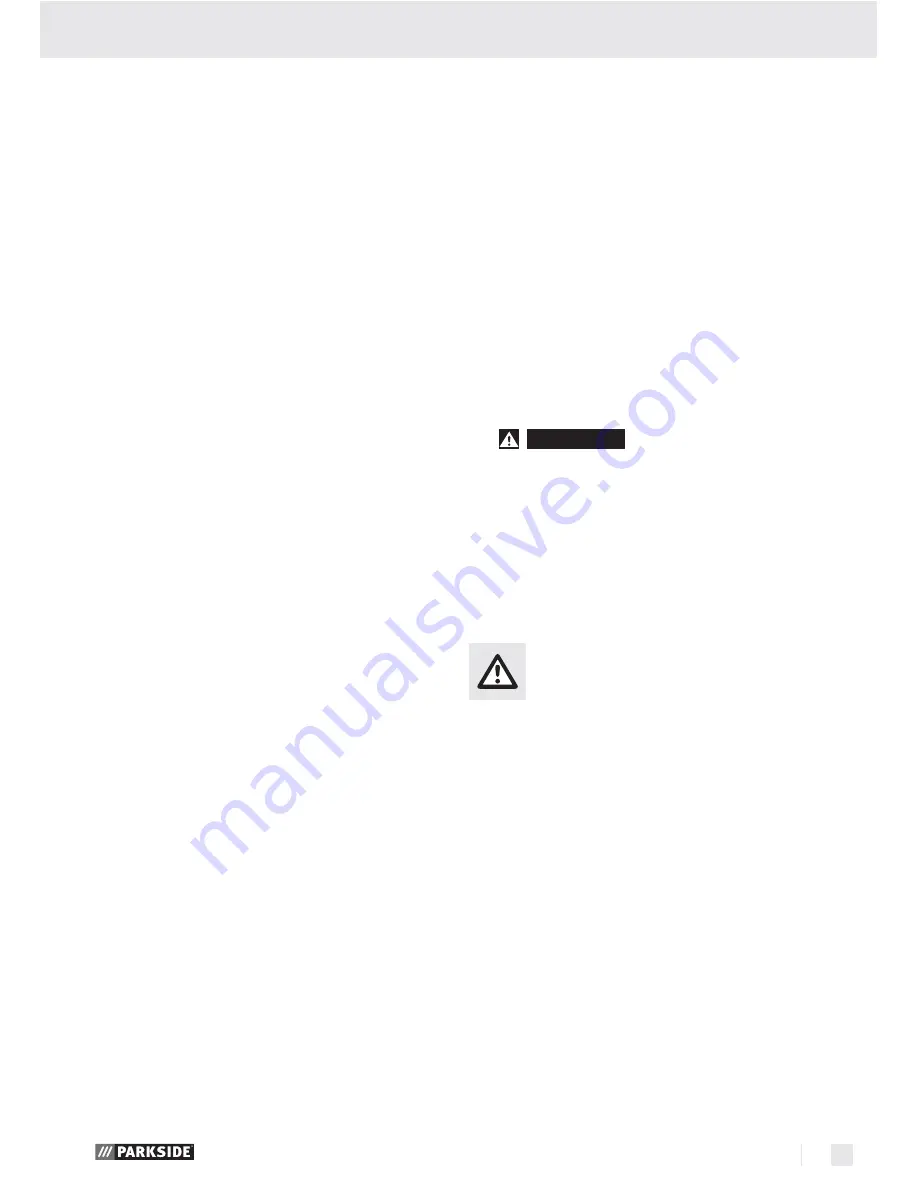
9
GB/IE/CY
General safety advice for electrical power tools
b)
Do not use an electrical power tool if
its switch is defective.
An electrical power
tool that can no longer be switched on and off
is dangerous and must be repaired.
c)
Pull the mains plug out of the socket
and / or remove the rechargeable bat-
tery before you make any adjustments
to the device, change accessories or
when the device is put away.
This pre-
caution is intended to prevent you from uninten-
tionally starting the device.
d)
When not in use always ensure that
electrical power tools are kept out of
reach of children. Do not let anyone use
the device if he or she is not familiar
with it or has not read the instructions
and advice.
Electrical power tools are dan-
gerous when they are used by inexperienced
people.
e)
Look after the device carefully. Check
that moving parts are working prop-
erly and move freely. Check for any
parts that are broken or damaged
enough to detrimentally affect the
functioning of the device. Have dam-
aged parts repaired before you use
the device.
Many accidents have their ori-
gins in poorly maintained electrical power tools.
f)
Keep cutting tools clean and sharp.
Carefully maintained cutting tools with sharp
cutting edges are less likely to jam and are
easier to control.
g)
Use the electrical power tool, accesso-
ries, inserted tools etc. in accordance
with these instructions and advice,
and the stipulations drawn up for this
particular type of device. In doing this,
take into account the working conditions
and the task in hand.
The use of electrical
power tools for purposes other than those in-
tended can lead to dangerous situations.
5. Use and handling of the cord-
less electrical power tool
a)
Charge a rechargeable battery unit
using only the charger recommended
by the manufacturer.
Chargers are often
designed for a particular type of rechargeable
battery unit. There is the danger of fire if other
types of rechargeable battery units are used.
b)
Only the rechargeable battery units
supplied are to be used with an elec-
trical power tool.
The use of other recharge-
able battery units may lead to the danger of
injury or fire.
c)
When they are not being used, store
rechargeable battery units away from
paperclips, coins, keys. nails, screws
or other small metal objects that could
cause the contacts to be bridged.
Short-
circuiting the contacts of a rechargeable battery
unit may result in heat damage or fire.
d)
WARNING!
Fluids may leak out of
rechargeable battery units if they are
misused. If this happens, avoid contact
with the fluid. If contact occurs, flush
the affected area with water. Seek
additional medical help if any of the
fluid gets into your eyes.
Escaping bat-
tery fluid may cause skin irritation or burns.
Safety advice for
waxer / polishers
Avoiding the danger of injury, fire and
damage to your health:
Always pull the plug out of the mains socket
before cleaning or maintaining the device.
Ensure that the bonnet is well secured to the
buffing plate.
Do not touch any rotating parts!
Before switching on check to ensure that the
buffing plate is not blocked and can start up
without problem.
Check to ensure that the bonnet and the buffing
plate are complete and undamaged. Immedi-
ately exchange torn or damaged bonnets /
buffing plates.
Wait until the polishing disc is flat on the surface
to be polished before switching on the waxer /
polisher.
Do not use any abrasives; these can destroy
the paint finish.









































